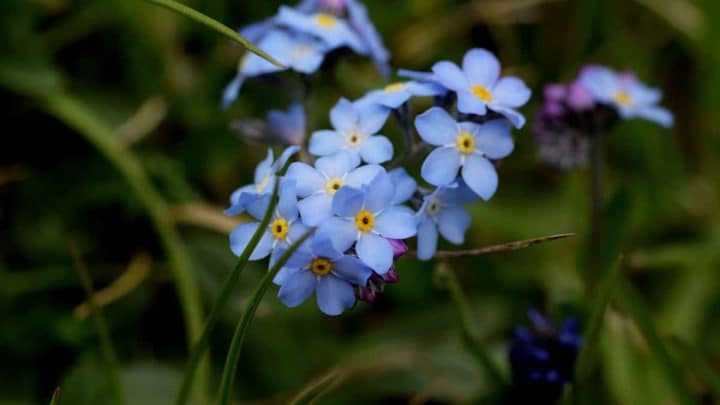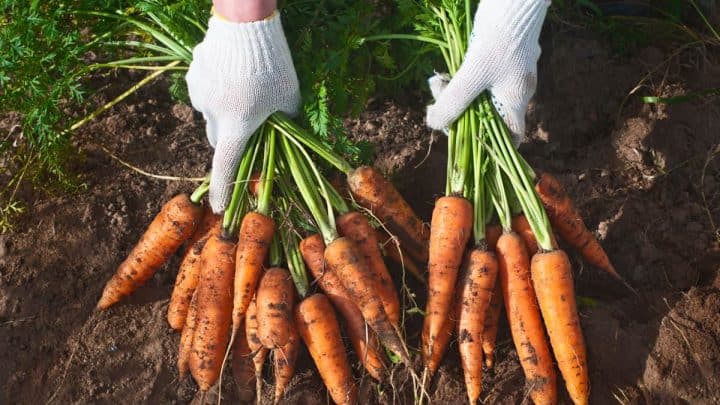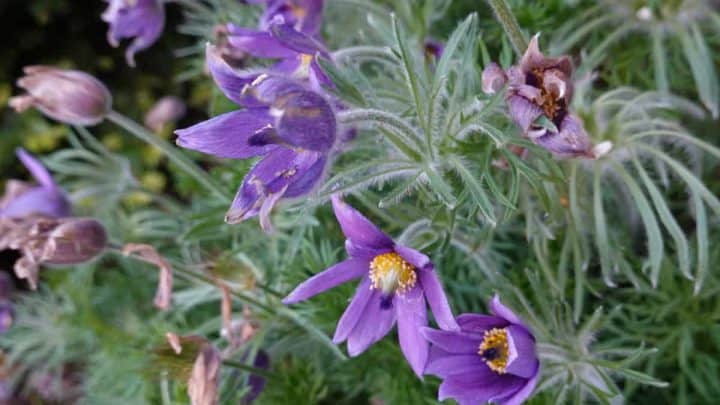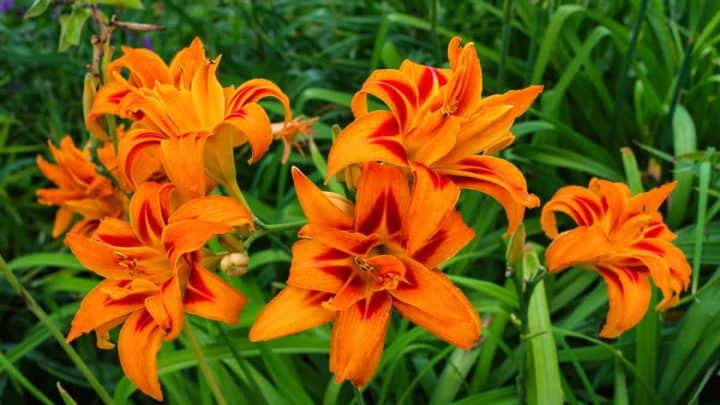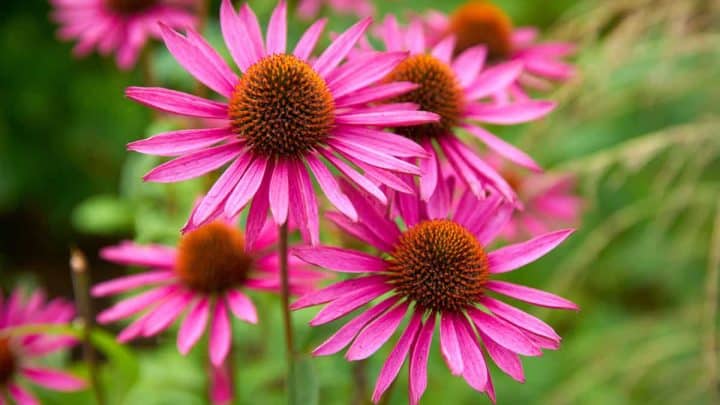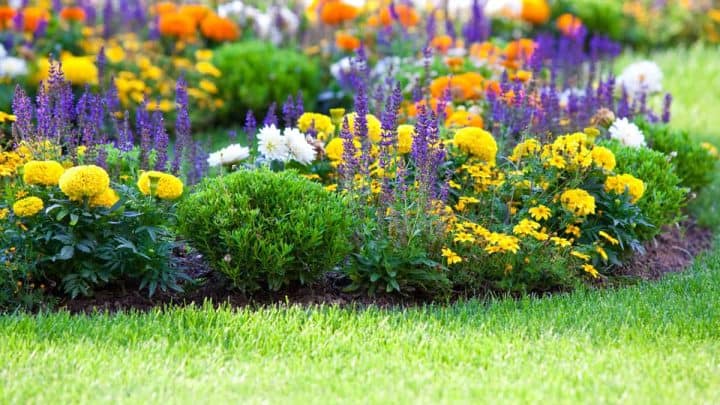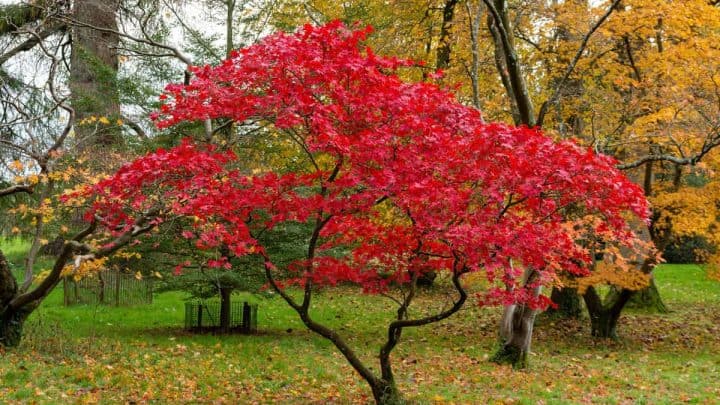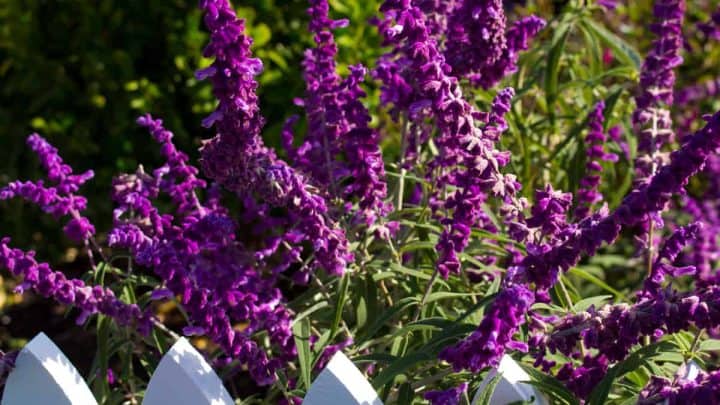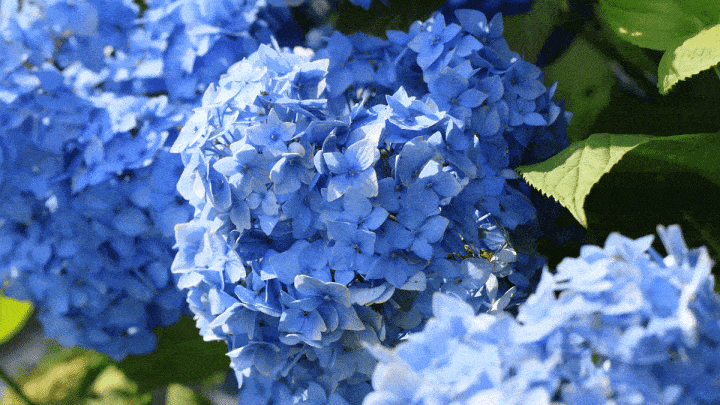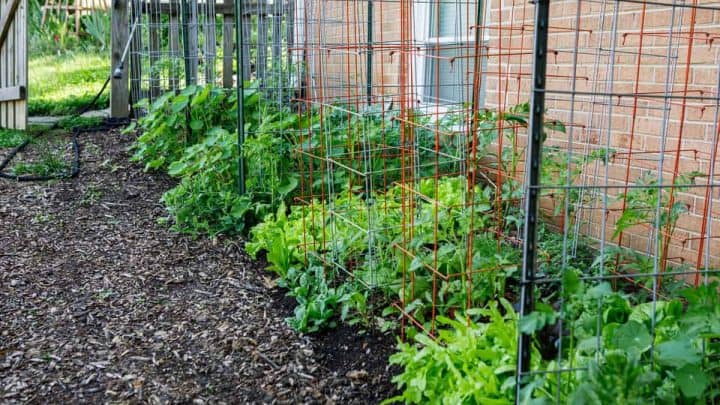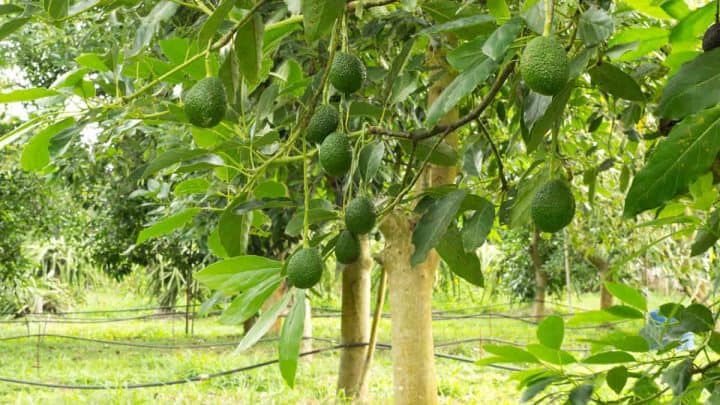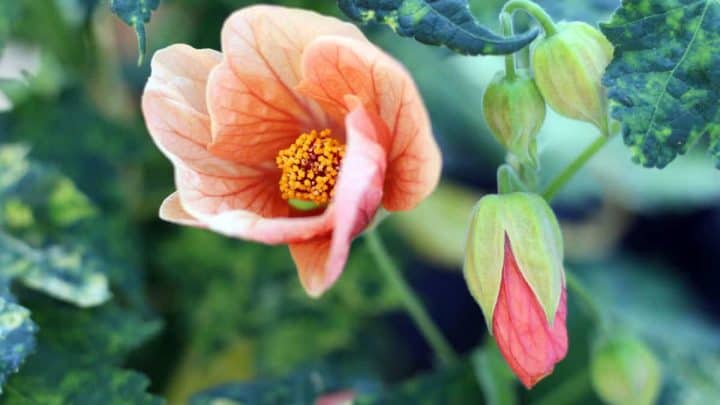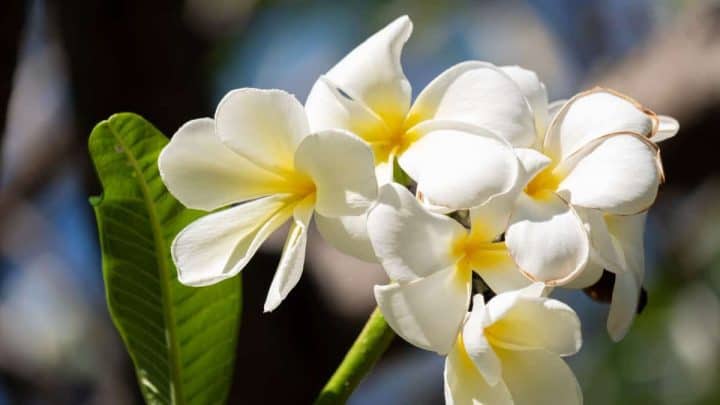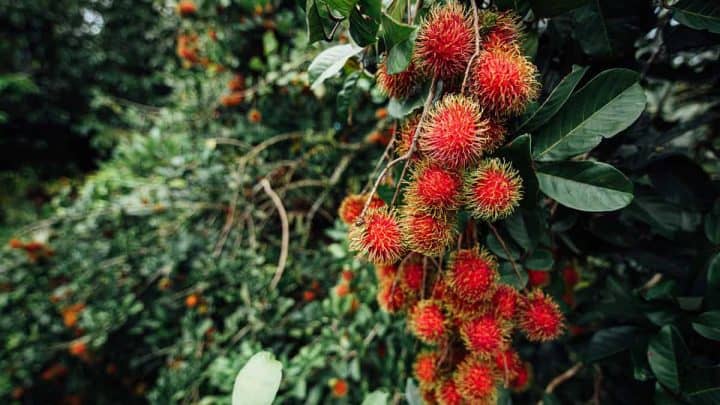The USDA Hardiness Zones are a standard set forth by the United States Department of Agriculture to help gardeners and growers determine which plants are most likely to thrive at a given location.
The system is based on the average annual minimum winter temperature, divided into 10-degree Fahrenheit zones.
The USDA Hardiness Zone Map divides North America into 13 zones, from Zone 1a to Zone 13b. The higher the zone number, the warmer the climate.
USDA Hardiness Zones
The USDA Hardiness Zones are a standard used by gardeners and growers to determine which plants are most likely to thrive in a specific location.
This system was developed by the United States Department of Agriculture (USDA), and it is a valuable tool for people who grow plants, including gardeners, farmers, and horticulturists.
Learn more by reading through these articles.
A Detailed Guide to 13 USDA Plant Hardiness Zones—Zone In On Your Garden
These 13 zones provide valuable information on which plants will thrive in your region, ensuring the success of your gardening endeavors.
Fruit Tree Suggestions for USDA Growing Zones 1-13
Considering the unique climate and soil conditions, this guide explores some of the best fruit trees for each USDA zone.
The 17 Best Plants to Grow in Zone 1a (-60 to -55 °F/-51.1 to -48.3 °C)
Zone 1A is the coldest of all USDA hardiness zones, with winter temperatures reaching extreme lows between -60 to -55 °F (-51.1 to -48.3 °C).
The 17 Best Plants to Grow in Zone 1b (-55 to -50 °F/-48.3 to -45.6 °C)
USDA Zone 1b is slightly less cold than Zone 1A, with winter temperatures dropping to lows between -55 to -50 °F (-48.3 to -45.6 °C).
The climate in Zone 1b is characterized by long, extremely cold winters and very short, cool summers.
The growing season remains limited, and plants in this zone must be able to withstand freezing temperatures and harsh, often windy conditions.
A Complete Guide to Indoor Gardening in Zone 1
Zone 1 is characterized by its extremely cold temperatures, with average minimum temperatures ranging from -60°F to -50°F.
Indoor gardening provides an opportunity to bypass harsh outdoor conditions and cultivate a wider range of plants.
Rock Gardens in Zone 1: Achieving Beauty in Extreme Conditions
Rock gardens are known for being low maintenance, as they require less water, fertilization, and maintenance compared to traditional gardens.
This is especially useful in extreme conditions where the growing season is short and caring for delicate plants can be more difficult.
Zone 1: Thriving Gardening Techniques For The Extreme Cold
By understanding the specific needs of plants in such harsh climates, you can create a thriving garden that is both productive and visually stunning.
The 17 Best Plants to Grow in Zone 2a (-50 to -45 °F/-45.6 to -42.8 °C)
USDA Zone 2A experiences winter temperatures that range from -50 to -45 °F (-45.6 to -42.8 °C).
The climate consists of long, extremely cold winters and short, cool summers.
The growing season is brief, and plants in this zone must be robust enough to handle freezing temperatures and often windy conditions.
The 17 Best Plants to Grow in Zone 2b (-45 to -40 °F/-42.8 to -40 °C)
USDA Zone 2b is characterized by minimum winter temperatures that fall between -45 to -40 °F (-42.8 to -40 °C).
The climate here includes long, cold winters and brief, cool summers.
The growing season is short, and plants must be able to withstand freezing temperatures and often harsh, windy conditions
3 Winter Interest Plants that Make Zone 2 Gardens Sparkle
"Winter interest" plants can play a significant role here, providing the color and vitality your garden needs.
They are not only hardy, withstanding harsh cold conditions, but they also flourish where other plants might struggle.
15+ Best Winter Vegetables to Grow in Zone 2
This area, one of the coldest USDA Hardiness Zones, has a short growing season from late May to early September.
It's crucial to focus on frost-tolerant vegetables and be mindful of the area's frost dates.
Cold Frame Gardening in USDA Zone 2
Cold frame gardening is an excellent way to extend your growing season, especially in challenging climates like USDA Zone 2.
This method allows you to protect your plants and grow cool-season crops earlier and later than usual in your garden.
Year-Round Indoor Herbs for Zone 2: a Guide for Kitchen Gardeners
Many popular choices, like basil, mint, and oregano, can thrive in containers, while others, such as rosemary and thyme, may need special attention due to their natural habitat preferences.
The 17 Best Plants to Grow in Zone 3a (-40 to -35 °F/-40 to -37.2 °C)
USDA Zone 3a is characterized by minimum winter temperatures that fall between -40 to -35 °F (-40 to -37.2 °C).
The climate in Zone 3a includes long, cold winters and short, cool to moderately warm summers.
The growing season is relatively short, and the conditions require plants to be resilient to freezing temperatures and potentially harsh conditions.
The 17 Best Plants to Grow in Zone 3b (-35 to -30 °F/-37.2 to -34.4 °C)
In USDA Zone 3b, winter temperatures can plunge to lows between -35 to -30 °F (-37.2 to -34.4 °C).
The winters in Zone 3b are notably long and cold, while summers are shorter and range from cool to moderately warm.
The growing season is limited due to these conditions, requiring plants to be resilient against freezing and often harsh weather.
Mastering the Art of Cold Climate Gardening in Zone 3
By focusing on plants suitable for Zone 3, you're helping to create a sustainable garden that adapts well to the local climate.
18 Optimal Trees for USDA Zone 3
Zone 3, characterized by minimum temperatures ranging from -40 to -35 degrees Fahrenheit, requires trees that can withstand these cold temperatures.
Edible Landscaping Options for USDA Zone 3
Edible landscaping is an innovative approach to gardening that combines the beauty and function of landscaping with the practical benefits of food production.
21 Gorgeous Shade Perennials For Zone 3
There are some perennials that are hardy enough to withstand the -40 degree nights, even when planted in the shade.
The 17 Best Plants to Grow in Zone 4a (-30 to -25 °F/-34.4 to -31.7 °C)
USDA Zone 4a sees winter lows ranging from -30 to -25 °F (-34.4 to -31.7 °C).
Zone 4a experiences cold, lengthy winters and short to moderate summers that can range from cool to warm.
The growing season is somewhat limited due to the colder conditions, requiring plants to have resilience against freezing temperatures and potentially harsh climates
The 17 Best Plants to Grow in Zone 4b (-25 to -20 °F/-31.7 to -28.9 °C)
Zone 4b is known for its moderately cold climate, with average minimum temperatures ranging from -25 to -20 °F (-31.7 to -28.9 °C).
These regions are characterized by long, cold winters and shorter growing seasons, requiring plants that can thrive in these colder conditions.
7 Zone 4 Perennials For Wet Areas
A majority of perennials thrive best in sunny areas with well-drained soil. However, you may find an area in your yard that is always soggy, and most plants planted in this location turn to mush and rot.
6 Zone 4 Perennials That Repel Mosquitoes
We'll show you six plants with mosquito-repelling powers that you can grow as perennials as far north as zone 4.
After that, we'll take a look at some annuals you can add to your horticultural arsenal in the battle against mosquitoes.
11 Zone 4 Plants That Attract Butterflies
You can attract beautiful butterflies with bright flowers and high-pollen plants. You can tell that you have a healthy garden when pollinators are present.
There are many great kinds of plants suitable for butterflies in this zone!
10 Zone 4 Perennials That Bloom All Summer
Imagine having a garden that’s not just a fleeting spectacle of spring, but a long-lasting summer dream.
A riot of colors dancing under the warm sun, blooming, vibrant and alive, not for a week or two, but all summer long.
How to Extend Your Growing Season in Zone 4
If you're gardening in Zone 4, you're familiar with the challenges of a shorter growing season.
But with strategic planning and some gardening tricks, you can extend your growing season and provide your plants with more time to flourish.
The Top Shade-Loving Plants for USDA Zone 4
In this guide, we'll explore some of the top shade-loving plants that can grow in USDA Zone 4, providing you with a range of options to transform your low-light garden areas into enchanting spaces filled with color, texture, and fragrance.
The 17 Best Plants to Grow in Zone 5a -20 to -15 °F (-28.9 to -26.1 °C)
Zone 5a experiences average minimum temperatures ranging from -20 to -15 °F (-28.9 to -26.1 °C), providing a delightful balance between cool winters and mild summers.
These regions are characterized by cool winters, moderate summers, and a growing season that typically lasts from late spring to early fall.
The 17 Best Plants to Grow in Zone 5b (-15 to -10 °F (-26.1 to -23.3 °C)
USDA Zone 5b is characterized by minimum winter temperatures ranging from -15 to -10 °F (-26.1 to -23.3 °C).
These regions are characterized by cool winters, moderate summers, and a growing season that typically lasts from late spring to early fall.
Seasonal Vegetable Gardening In USDA Zone 5: Conquering The Seasons
There's nothing quite like the satisfaction of biting into a fresh vegetable that you've grown yourself.
But as residents of USDA Zone 5, we've got a unique set of challenges.
7 Best Native Plants for a Zone 5 Garden
Living in Zone 5 has its advantages, including experiencing all four seasons and having a wide range of plants to grow.
However, it's important to choose plants that are well-suited to the local climate and soil conditions to ensure a successful garden.
14 Great Annuals for Zone 5B
We'll take a closer look at each of these 14 flowers. We'll see what makes them shine, as well as some tips for how to get the most out of them in Zone 5Bbs growing season. Read on to learn all about it!
7 Best Cherry Trees for Zone 5
Whether you snack on them fresh or bake them in a pie, cherries are some of the best summer fruits. If you live in zone 5, you may wonder what cherry trees you can grow that will survive the frosty winters.
We've put together some of the best zone 5-hardy cherry varieties for your consideration.
9 Beautiful Perennial Grasses for Zone 5
If you live in Zone 5, you can easily grow these 9 perennial ornamental grasses.
11 Best Perennials for Zone 5
While annuals and biennials need to be replaced after they go to seed, perennials can last for years, bringing season after season of beautiful flowers.
Of course, it's necessary to choose the right ones for your specific climate. If you live in Zone 5, we've put together some of the best perennials you can add to your garden.
5 Zone 5 Perennials That Bloom All Summer
Perennials are well-loved because they come back year after year. Low-maintenance, show stoppers that will bloom all summer are even better!
If you're in zone 5, you might wonder what perennials bloom all summer long. Stay tuned.
12 Drought-Tolerant Plants For Zone 5
When water is scarce, what better way to adapt than to choose completely low-maintenance plants in our blooming backyards, right?
10 Beautiful Vines And Climbing Plants For Zone 5
Climbing and vine plants can turn many vertical surfaces into a beautiful green landscape. To use trellises or walls, you should plant some fantastic vining plants.
We've compiled a list of some of the top climbing and vine plants that can thrive in the USDA Hardiness Zone 5.
10 Zone 5 Perennials That Like Wet Soil
Most plants hate soggy soil and wet feet, but some still prefer these conditions.
Those who are living in colder and snowy climates, like Zone 5, might already be wondering what kind of perennials are like wet soil. We have the answer.
10 Dwarf Trees For Zone 5
While trees are a nice addition to any yard or property, not everyone has enough space to manage them when they are fully grown. Dwarf trees are the answer to this dilemma.
Plants that thrive in Zone 5 can handle temperatures as low as -20 degrees Fahrenheit. Here are ten dwarf trees that you can plant in this specific USDA growing zone.
11 Best Azaleas For Zone 5
Navigating through botanical challenges is complicated enough on your own. That's why we compiled a list of stunning azalea flowers that grow well in zone 5.
7 Shade Trees For Your Zone 5 Backyard
Shade trees are a great addition to any yard. Not only do they block the sun, but they can also give privacy, lessen surrounding noise, and attract animals.
Overall, Hardiness Zone 5 is an excellent place to grow different plants. However, the trees must be able to survive the cold winter months.
7 Evergreens For Shade Zone 5
When you're planting in Zone 5, you need to know which evergreens are best suited to your soil and climate.
Plant the wrong evergreen and your landscaping may struggle to meet your expectations.
Fortunately, there are several evergreens that thrive not only in Zone 5 but in the shade as well.
11 Great Fruit Trees For Zone 5
Growing your food is both rewarding and delicious! If you don't live in a warm climate, you might think it's impossible to grow a fruit tree in your yard.
However, that is not the case! Several varieties of fruit trees will thrive in cooler climates, like in Zone 5.
9 Flowering Trees For Zone 5
The cold weather may seem inhabitable for ornamentals, but there are many flowering trees that can thrive in this region.
7 Zone 5 Perennials For Shade [Or Partial Shade]
You may feel limited in your choices of perennials because you live in Zone 5 and most of your yard is fully or partially shaded. We have 7 Zone 5 perennials for shade or partial shade.
10 Plants For Erosion Control Zone 5
Exposing soil to extreme conditions can cause soil erosion. Hard rains, strong wind, and even human activity can make soil lose its structure and nutrients.
Thankfully, some plants can help slow or reverse the breakdown of dirt.
The 18 Best Plants to Grow in Zone 6a (-10 to -5 °F, -23.3 to -20.6 °C)
Zone 6a experiences average minimum temperatures ranging from -10 to -5 °F (-23.3 to -20.6 °C), offering a delightful balance of moderate winters and warm summers.
These regions are characterized by mild to moderately cold winters, warm summers, and a growing season that typically lasts from spring to fall.
The 17 Best Plants to Grow in Zone 6b (-5 to 0 °F/-20.6 to -17.8 °C)
Zone 6b experiences average minimum temperatures ranging from -5 to 0 °F (-20.6 to -17.8 °C), offering a delightful balance of moderate winters and warm summers.
These regions are characterized by mild to moderately cold winters, warm summers, and a growing season that typically lasts from spring to fall.
Year-Round Gardening Tips for Zone 6
If you're living in Zone 6, you're lucky to have a fairly moderate climate, which means there are year-round gardening opportunities for you to explore.
From winter preparation to summer planting, there are always tasks and projects to keep you engaged in your garden throughout the entire year.
The Best Herbs for Zone 6 Gardening
As a passionate gardener, you might be wondering about the best herbs to grow in Zone 6.
With its moderate climate and well-distributed rainfall, this region offers excellent conditions for cultivating a variety of aromatic and flavorful herbs.
How to Greenhouse Garden in Zone 6
Greenhouse gardening is an excellent way to extend your growing season and enjoy fresh produce all year long, especially in Zone 6.
By creating the right environment, you can easily grow plants that thrive in this temperate zone and even venture into cultivating exotic varieties
10 Zone 6 Plants That Like Wet Soil
Zone 6 covers a good portion of the eastern United States. Planting crops that fit your zone is important to ensure the plant's maximum survival rate.
Not only do these plants have to thrive in climate zone 6, but we're taking a look at plants that like wet soil. Be sure to choose a plant that fits your needs.
Cold Hardy Citrus For Zone 6? [5 Suggestions For Your Landscaping]
Choosing the right plants for your garden and climate isn't always easy. Do you want to plant a citrus tree in your landscape but live in Zone 6 and have no clue where to begin? Read this article.
16 Zone 6 Perennials That Are Full Sun And Drought Tolerant
Zone 6 has a growing season from early spring to early fall. Mid-March is usually the last frost, and November is the season's first frost.
That said, it is essential to know what plants thrive in Zone 6. We have a spectacular list of Zone 6 perennials that are full sun and drought-tolerant.
11 Shrubs For Shade That Grow Well In Zone 6
Zone 6 is considered to be a medium-length growing zone. Check out some of the best shrubs for shade in Zone 6.
Zone 6 Flowers To Plant In Fall [14 Suggestions To Beautify Your Landscaping]
USDA Hardiness Zone 6 has frigid winters and hot summers. Knowing which plants thrive in this zone is important due to the extreme temperatures that Zone 6 can experience.
Let's go over a list of flowers to plant in the fall for Zone 6 and how to beautify your landscape.
15 Fruit And Nut Trees For Zone 6
Fruit and nut trees are valuable assets to your landscape. They provide shade, beauty, and, most importantly, a delicious food source!
If you live in a zone 6 state, we've got 15 fruit and nut trees that are sure to thrive in your climate.
20 Best Perennials For Zone 6 Gardens
Zone 6 is characterized by a mild climate and is where the average lowest winter temperature is between -10 and 0 degrees Fahrenheit. With climates like this, you can grow a wide variety of perennials.
The 17 Best Plants to Grow in Zone 7a (0 to 5 °F/-17.8 to -15 °C)
Zone 7A, with minimum winter temperatures ranging from 0 to 5 °F (-17.8 to -15 °C), provides a relatively long growing season from late spring to early fall.
Gardeners in these regions can enjoy the opportunity to cultivate various plant varieties, bringing beauty and abundance to their gardens.
These regions are characterized by mild winters, warm to hot summers, and a growing season that typically lasts from spring to fall.
The 17 Best Plants to Grow in Zone 7b (5 to 10 °F/-15 to -12.2 °C)
USDA Zone 7b is distinguished by its minimum winter temperatures that typically fall between 5 to 10 °F (-15 to -12.2 °C).
These regions are characterized by mild winters, warm to hot summers, and a growing season that typically lasts from spring to fall.
Garden Design Ideas for Mild Climate Zones: Zone 7
Garden design can be an enjoyable and rewarding experience, especially when you live in a mild climate zone like Zone 7.
With its temperate weather, Zone 7 provides a wide range of opportunities for diverse plant selections and creative garden layouts.
How to Maintain a Healthy Lawn Year-Round in Zone 7
Maintaining a healthy lawn year-round can be a challenging task, especially in Zone 7. The region experiences hot summers and cold winters, which can be tough on the grass.
But with the right approach, it is possible, and here are some tips to help keep your lawn looking lush and green throughout the year.
12 Most Vibrant Fall Color Plants for Zone 7
Seasonal shifts can transform the landscape around us, and no season is more testament to this than the explosion of color we see in fall.
With trees taking on shades of fiery red, bold orange, and golden yellow, our surroundings become a living, breathing canvas of nature's artistry.
12 Cold-Hardy Vegetables For Zone 7 [With Pictures!]
An edible garden is a great way to save money at the grocery store and stay physically active.
In order to grow vegetables successfully, you'll need to ensure they can survive the cold weather in your USDA Hardiness Zone.
For those living in Zone 7, your plants will have to withstand temperatures that can reach as low as 0 degrees Fahrenheit.
Don't let these low temperatures fool you. There are still plenty of plants that can grow in these regions.
10 Best Ornamental Grasses for Zone 7
Ornamental grasses can transform your garden, adding movement, color, and texture to your landscape.
If you live in Zone 7, known for its moderate climate with hot summers and cold winters, you're in luck!
There is an array of beautiful and resilient ornamental grasses that thrive in this area.
The 17 Best Plants to Grow in Zone 8a (10 to 15 °F/-12.2 to -9.4 °C)
Zone 8a experiences average minimum temperatures ranging from 10 to 15 °F (-12.2 to -9.4 °C).
These regions are characterized by mild winters, hot summers, and a long growing season.
The 17 Best Plants to Grow in Zone 8b (15 to 20 °F/-9.4 to -6.7 °C)
Zone 8b experiences average minimum temperatures ranging from 15 to 20 °F (-9.4 to -6.7 °C).
These regions have mild winters, hot summers, and a long growing season.
How to Create a Beautiful Butterfly Garden in Zone 8
Zone 8 is absolutely perfect for a butterfly garden, thanks to its temperate climate and diverse plant life.
10 Secret Gardening Tips for the Warm Climates of Zone 8
Welcome to the world of Zone 8 gardening, where warmth and sunshine create an ideal environment for cultivating a thriving garden.
If you're fortunate enough to reside in this climate, get ready to discover 10 proven strategies that will help you unlock the secrets to gardening success.
Planning and Maintaining a Drought-Tolerant Garden in Zone 8
In Zone 8, where gardening lovers enjoy a wide range of plants, droughts can harm their gardens.
To overcome this, it's crucial to plan and maintain a garden that can survive without much water and still look beautiful.
When creating a drought-tolerant garden in Zone 8, choose plants that can handle dry conditions and don't need a lot of water.
Also, use smart gardening techniques like efficient watering and taking care of the soil.
10 Thriving Tropical Plants for Zone 8 Gardens
You might think tropical plants can only grow in regions with consistently high temperatures.
However, there is a wide variety of tropical and exotic plants that can flourish in the more temperate conditions of Zone 8.
With careful selection and proper care, you can create a vibrant garden that makes every day feel like a vacation.
Best Avocado Trees For Zone 8
Avocados grow well in moderately warm climates, so planting them in Zone 8 is appropriate.
With plenty of avocado varieties available, you may want to narrow your options.
The 17 Best Plants to Grow in Zone 9a (20 to 25 °F/-6.7 to -3.9 °C)
Zone 9a experiences average minimum temperatures ranging from 20 to 25 °F (-6.7 to -3.9 °C), offering a delightful balance of mild winters and hot summers.
From vibrant flowering vines to lush tropical trees, the plant choices are abundant, providing ample opportunities to create stunning and colorful gardens with a touch of tropical allure.
The 17 Best Plants to Grow in Zone 9b (25 to 30 °F/-3.9 to -1.1 °C)
Zone 9b experiences average minimum temperatures ranging from 25 to 30 °F (-3.9 to -1.1 °C), allowing gardeners to cultivate various plants.
These regions have mild winters, hot summers, and a long growing season.
How to Build a Thriving Organic Vegetable Garden in Zone 9
Creating a flourishing organic vegetable garden in Zone 9 may seem challenging, especially for those new to gardening.
However, with the right knowledge and guidance, anyone can transform their green space into a productive and sustainable oasis.
Gardening with Succulents in Zone 9: Tips and Tricks
Gardening with succulents in Zone 9 offers a unique opportunity for gardeners to create drought-tolerant, low-maintenance gardens with flair.
Zone 9, with its warm climate and long growing seasons, provides ideal conditions for many succulent species to thrive.
10 Container Garden Ideas for Zone 9
Zone 9 is a region known for its generous sunshine and warm temperatures, creating an ideal environment for container gardening.
10 Luscious Tropical Landscape Ideas For Zone 9
If you find yourself dwelling in the radiant warmth of Zone 9, consider yourself one of the fortunate ones.
This zone is a fertile playground for tropical plants, and with the right touch, you can transform your garden into a lush, tropical oasis.
The 17 Best Plants to Grow in Zone 10a (30 to 35 °F/-1.1 to 1.7 °C)
With average minimum temperatures ranging from 30 to 35 °F (-1.1 to 1.7 °C), this zone offers an ideal environment for a diverse range of plants.
These regions are characterized by long growing seasons, ample sunlight, and high humidity.
The 17 Best Plants to Grow in Zone 10b (35 to 40 °F/1.7 to 4.4 °C)
Zone 10b, characterized by average annual minimum temperatures ranging from 35 to 40 °F (4.4 to 7.2 °C), is primarily found in tropical and subtropical regions across the globe.
Zone 10b is known for its warm and tropical weather.
It typically experiences hot summers and mild winters and is often associated with high humidity due to its tropical and subtropical climate.
10 Palm Varieties for Your Zone 10 Garden
Known for their lush beauty and practical benefits like shade and low maintenance, these palms can add a tropical charm to your space.
We'll cover 10 species, from striking, tall palms to more subtle ones, all of which thrive in warm climates and can withstand occasional frost.
5 Best Beach-Resistant Plants for Your Zone 10 Garden
Are you dreaming of creating your coastal paradise right in your backyard?
The soothing waves, warm sand, and refreshing ocean breeze can be captured with the right selection of plants that thrive in the challenging environment of a Zone 10 garden.
How to Maintain Healthy Plants in Zone 10's High-Heat Conditions
Maintaining healthy plants in the region's high heat conditions can be challenging in Zone 10.
But there are several strategies you do to keep your beloved plants thriving even under the scorching sun.
8 Perennial Plants That Bloom All Year in Zone 10
Zone 10 is known for its warm and tropical climate, making it an ideal location for a variety of beautiful and vibrant plants.
The 17 Best Plants to Grow in Zone 11a (40 to 45 °F/4.4 to 7.2 °C)
Zone 11a experiences average minimum temperatures ranging from 40 to 45 °F (4.4 to 7.2 °C), creating an ideal environment for various plants.
With its year-round warm temperatures and high humidity, Zone 11a offers an extended growing season and the opportunity to cultivate various tropical and exotic plants.
The 17 Best Plants to Grow in Zone 11b (45 to 50 °F/7.2 to 10 °C)
Zone 11b experiences average minimum temperatures ranging from 45 to 50 °F (7.2 to 10 °C), creating an ideal environment for many plants.
It is characterized by its subtropical climate, offering warm and favorable conditions for plants.
11 Year-Round Flowering Plants for Zone 11 Gardens: a Colorful Parade of Perennials
Looking to breathe life into your Zone 11 garden all year round? This guide is your key to creating a garden with a vibrant display of blooms, no matter the season!
We discuss a selection of 11 hardy and stunning flowering plants that thrive in warm climates.
How to Care for Your Garden in the Constant Warmth of Zone 11
Zone 11's unique climate offers a variety of opportunities for growing tropical and subtropical plants year-round.
The consistent warmth of Zone 11 can lead to rapid growth, so it's crucial to regularly monitor your plants' progress and adjust your care routine accordingly.
Indoor-to-Outdoor: 8 Houseplants That Thrive Outside in Zone 11
Cultivating a thriving garden in Zone 11 can be exciting, especially when you consider the variety of houseplants that can successfully transition from indoor to outdoor living.
With year-round warm temperatures and minimal frost exposure, this climate zone provides the perfect environment for many tropical and subtropical plants to flourish outdoors.
9 Tropical Fruit Trees That Thrive in Zone 11: Your Gateway to a Lush Paradise!
We'll be exploring 9 tropical fruit trees that thrive in Zone 11, from fig trees that withstand chilly temperatures to pomegranates that adapt to various climates
11 Top Heat-Loving Perennials for Zone 11
Growing your garden in Zone 11 presents the unique challenge of finding plants that can tolerate high temperatures and thrive in full sun.
As a gardener, you must select the perfect variety of perennials to create a beautiful and low-maintenance oasis that can withstand the heat.
We've gathered a list of 11 top heat-loving perennials that are perfect for your Zone 11 garden and built to thrive under the heat of the sun.
The 17 Best Plants to Grow in Zone 12a (50 to 55 °F/10 to 12.8 °C)
Zone 12a experiences average minimum temperatures ranging from 50 to 55 °F (10 to 12.8 °C), providing an ideal environment for a diverse range of plants to thrive.
The 17 Best Plants to Grow in Zone 12b (55 to 60 °F/12.8 to 15.6 °C)
Zone 12b experiences average minimum temperatures ranging from 55 to 60 °F (12.8 to 15.6 °C), providing an ideal environment for a diverse range of plants to thrive.
Navigating Tropical Gardening Challenges in Zone 12
Tropical gardening in Zone 12 comes with its own set of unique challenges and rewards.
With a year-round growing season and an abundance of sunlight, you have the opportunity to create a lush, vibrant landscape filled with a variety of exotic plants.
However, successfully navigating this tropical paradise requires an understanding of the climate, soil, and plant species that thrive in this environment.
8 Top Tropical Fruit Trees for Your Zone 12 Garden: From Seed to Sweetness
Ready to bring a slice of the tropics to your backyard? This guide explores 8 top tropical fruit trees that will thrive and produce bountiful harvests in Zone 12 gardens.
10 Thriving Desert Plants for Your Zone 12 Landscape
Welcome to the resilient world of desert plants that flourish in the challenging environment of Zone 12.
This article will cover a variety of these survivors that not only resist harsh arid conditions but also enhance your landscape with their unique aesthetics.
Best Practices for Container Gardening in Zone 12
Container gardening allows individuals living in Zone 12 to flex their green thumbs and create beautiful, thriving plant arrangements despite the challenges of a tropical and subtropical climate.
With the right choice of plants, attention to sunlight, and proper watering techniques, gardeners can turn their balconies, patios, and small yards into lush, verdant spaces.
The 17 Best Plants to Grow in Zone 13a (60 to 65 °F/15.6 to 18.3 °C)
Zone 13a experiences average minimum temperatures ranging from 60 to 65 °F (15.6 to 18.3 °C), providing an ideal environment for a diverse range of plants to thrive.
The 17 Best Plants to Grow in Zone 13b (65 to 70 °F/18.3 to 21.1 °C)
Zone 13b experiences average minimum temperatures ranging from 65 to 70 °F (18.3 to 21.1 °C), providing an ideal environment for a diverse range of plants to flourish.:
USDA Plant Hardiness Zone 13b is characterized by warm minimum temperatures that range from 65 to 70 degrees Fahrenheit.
Creating a Wildlife-Attracting Garden in Zone 13
Creating a wildlife-attracting garden in Zone 13 is an excellent way to bring nature to your doorstep while promoting a healthier ecosystem.
By purposefully choosing native plants and designing your garden with wildlife in mind, you can create a beautiful, sustainable, and thriving habitat for a variety of beneficial creatures, including birds, butterflies, and pollinators.
Thriving in Extreme Warmth: How to Make Your Zone 13 Garden Flourish
Gardening in extreme warmth can be a demanding endeavor, presenting unique obstacles and tests to even the most experienced gardeners.
The scorching sun and relentless heat, coupled with the arid conditions, can pose significant challenges for plants striving to flourish in such an environment.
But with careful planning, thoughtful strategies, and a touch of resilience, you can transform your garden into a thriving oasis even within the hot climate of Zone 13.
3 Unique Tropical Trees to Try in Your Zone 13 Garden
Gardening in Zone 13 comes with a unique set of challenges—the intense sun, arid conditions, and the potential for drought seasons.
But it's not all heatwaves and sunburns; Zone 13 is a paradise for growing a wide array of unique and exotic tropical trees.
Here's a list of 3 spectacular species that are not only tailored to thrive in these conditions but will also add a splash of vibrant color and diversity to your Zone 13 garden.
Successful Strategies for Growing Succulents in Zone 13
Growing succulents in Zone 13 can be a rewarding experience for gardening enthusiasts who adore the unique and diverse beauty of these eye-catching plants.
As this zone is known for its incredibly hot and dry climate, selecting the appropriate species, properly caring for them, and implementing suitable strategies will greatly enhance your chances of success.




